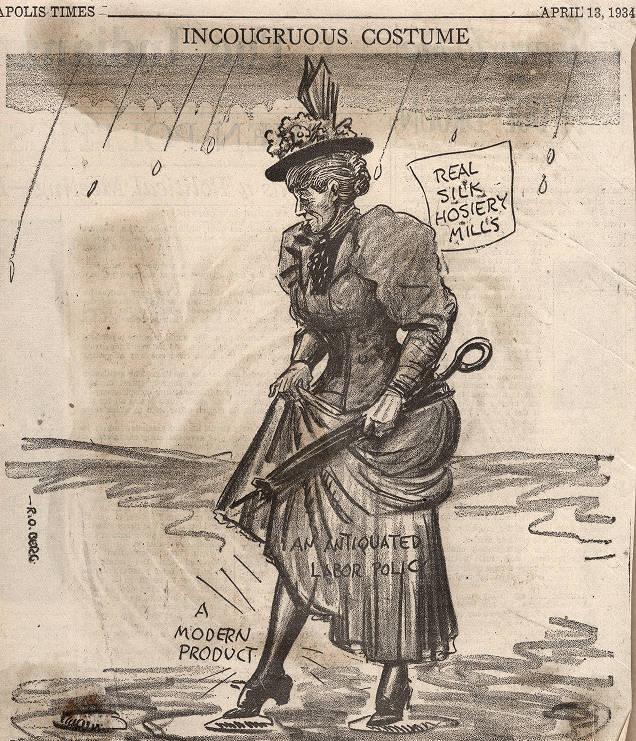The Real Silk Hosiery Mill strike of April-May 1934 is one of the city’s most famous and violent labor strikes. In June 1933, the U.S. Congress passed the National Industrial Recovery Act (NIRA) as part of the New Deal efforts to recover from the Great Depression. Section 7(a) of the act assured workers “the right to organize and bargain collectively through representatives of their own choosing.” The act also established the National Labor Board (NLB) to settle labor disputes. Both the act and the board, however, proved inadequate, and by the spring of 1934 labor nationwide experienced the frustration of securing the enforcement of section 7(a).

The American Federation of Full-Fashioned Hosiery Workers (AFHW), affiliated with the American Federation of Labor (AFL), sought recognition in October 1933, as the bargaining representative for the skilled knitters and other hosiery workers in the Real Silk plants in Indianapolis. At the time, the Employees Mutual Benefit Association (EMBA), a company union, claimed to have represented all workers at Real Silk for the previous 12 years.
An election, held under the auspices of the NIRA, allowed all Real Silk employees to select a union, even though nearly 66 percent of the workers were not eligible for membership in the AFHW. Predictably, the EMBA won by a 2-1 margin. The AFHW protested to the NLB, claiming that unskilled workers were allowed to vote in the election. After the labor board upheld the election, the AFHW membership voted on April 6, 1934, to strike. Approximately 800 Real Silk workers participated, seeking union scale wages and the abolition of bonus and penalty systems.

Violence flared in the city within days. Employees were threatened, property was damaged, and scabs, or replacement workers, were beaten. The company launched a harsh publicity campaign against the striking minority. When the AFHW lost its appeal to the NLB, workers continued their strike. This attracted federal attention and made Indianapolis a focal point of the Roosevelt administration’s attempts to settle labor problems while keeping recovery efforts from stagnating.
In early May, the National Labor Board and Secretary of Labor Frances Perkins sent two mediators to settle the strike. Violence intensified during their negotiations. Street fights, attacks on buses carrying company workers, and a successful bombing of an employee’s home (another effort failed) moved Mayor and Chief of Police to invoke special police powers and Real Silk management to increase its publicity campaign against the “misguided strikers” who used “un-American methods.” Labor accused Sullivan and Morrisey of a conflict of interest, charging that they possessed a financial interest in the company.
After recalling the unsuccessful mediators, the NLB asserted its jurisdiction, reopened the matter, and set May 22, 1934, for a hearing at its Washington, D.C., headquarters. The final settlement left no one a clear winner. Real Silk and the Employees Mutual Benefit Association claimed victory since the NLB had upheld the majority vote of the workers, which allowed the EMBA to retain worker representation at the largest of Real Silk’s Indianapolis plants. The Hosiery Workers claimed victory because the same ruling secured their representational rights at Real Silk’s two smaller Indianapolis plants where the union had obtained a majority of the votes. On May 24, union members voted 512-212 to return to work.

Help improve this entry
Contribute information, offer corrections, suggest images.
You can also recommend new entries related to this topic.




